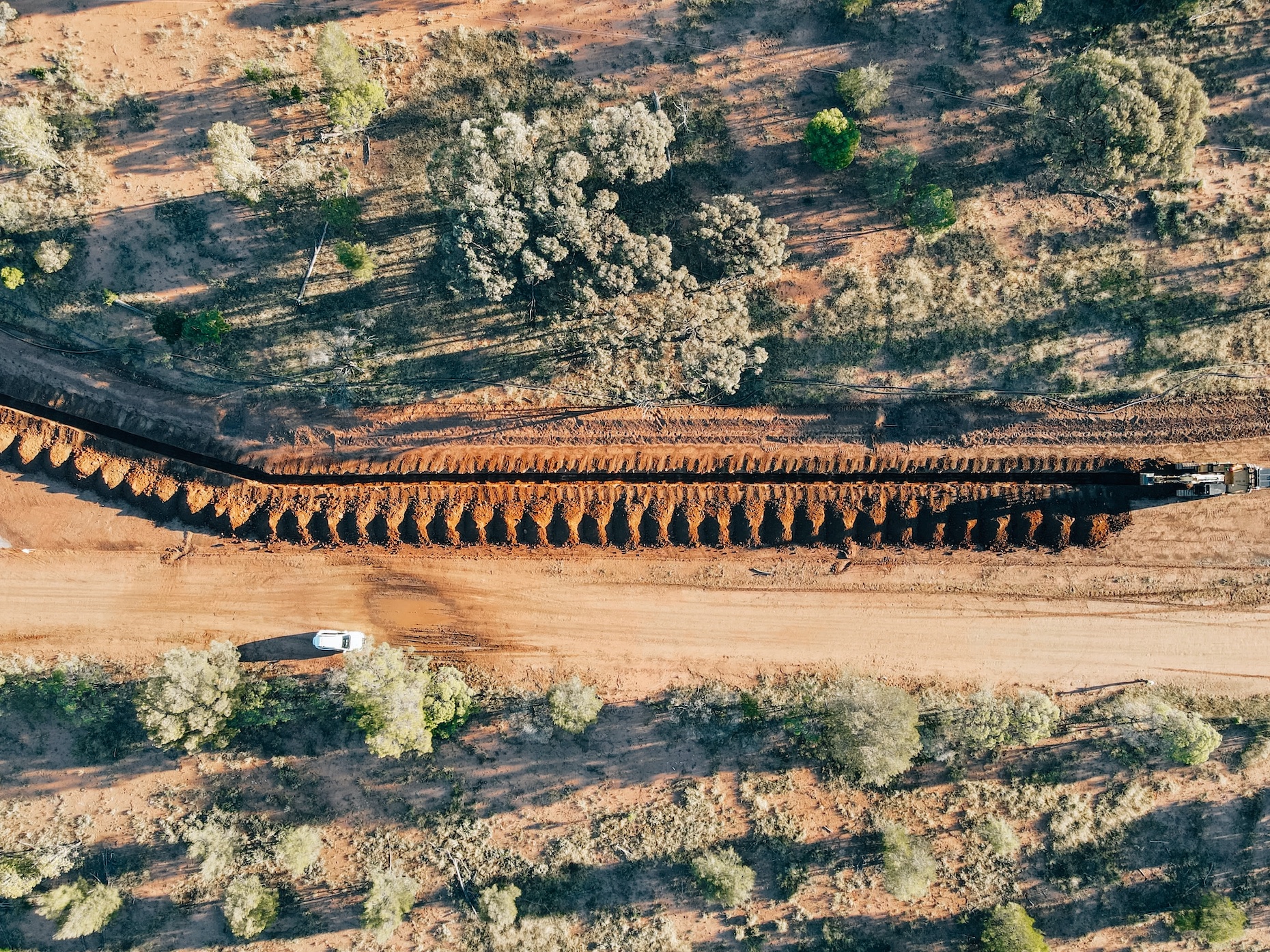Managing stormwater runoff is essential. Everyone from homeowners to municipalities has a role to play.
The rain has changed.
A passing storm is no longer the enriching bringer of life it once was. Today’s rain brings pollution. Indeed, forever chemicals are contained within the rain itself. And once it hits the ground, the rain creates an entirely different problem:
Stormwater runoff.
Runoff pollution is nothing new. Improperly disposed pollutants have caused untold damage through industrialized history. However, stormwater runoff is different. It avoids standard treatment options. Instead, it flows over the surface and causes generations-worth of damage.
Construction sites offer prime runoff conditions. Management and control of runoff are therefore essential for any construction project.
What is Stormwater Runoff?
As the name suggests, stormwater runoff is flowing rainfall that doesn’t absorb into the ground. Because of the rise of impermeable surfaces like roads and roofs, there is less soil surface to absorb and filter rainwater.
Instead, rain pools and flows to low points, often ending up in natural water supplies. Rain simply returning to nature shouldn’t be a problem. Unfortunately, though, stormwater runoff flows over dirty city streets and polluted industrial sites. The water that reaches a natural creek or stream is highly polluted, and often deadly to the natural flora and fauna.
It isn’t just urban areas that feel the sting of stormwater runoff. In New Mexico, a small town named Las Vegas suffered a collapse of half of its drinking water after a runoff event.
High-pollution industries are often under scrutiny to avoid worsening the problems. In fact, the construction industry is one of the most heavily regulated. The Clean Water Act of 1972 established a permit system for water quality at construction sites.
Sites receive construction operation permits limited by water quality management. As long as pollution levels in discharged water remain below-established levels, the site stays open. This does help prevent the catastrophic collapse of our ecosystems, but it isn’t enough. The existing culture of construction must change.
Below are six best management practices (BMPs) for managing stormwater runoff at construction sites. Designed for simple deployment, they focus on action, results, and, ultimately, saving our environment.
Best Management Practices
A construction site’s complex and changing nature doesn’t allow for a simple stormwater fix. No two sites are ever the same. Topography, soil type, and even the surrounding plants influence the conditions of a site. As such, every site requires a thoughtful approach to managing stormwater runoff.
The best management practices to achieve these goals often fall into two categories: structural and non-structural. Structural BMPs use structures and items to control runoff. Non-structural practices focus more on preemptive and long-term solutions.
For optimum results, a combination of structural and non-structural solutions are often employed. With plans and training, full BMP coordination can turn a construction site into an environmental protector.
Structural BMPs
Structural best management practices often fit the specific site and location. These three examples focus on different solutions to provide optimum runoff control.
- Surface Sand Filters
Sand is a great filter. The technology behind sand filters has existed for hundreds of years. Construction sites maximize that science to make ultimate use of the efficacy of sand filtering.
Surface sand filters provide a spot-barrier against construction runoff pollution. They filter over 80% of suspended solids, plus many other dangerous chemicals. You can position sand filters in areas of natural runoff, or in an area best suitable to capture water from the site’s wastewater tank.
Sand filters also often contain additional treatment plans. Biocidal layers and other filtering media help remove many common construction pollutants.
- Infiltration Trenches

Built’s robots are meticulous with their spoil placement. This fully autonomous excavator is digging trenches in Queensland, Australia. Image by Built Robotics, via Unsplash.com.
Infiltration trenches provide a less-intrusive runoff management option. Strategically dug around a site, infiltration trenches manage and contain runoff. They also promote that runoff to filter down through the soil, and back into the groundwater. This is exceptionally beneficial, as impervious surfaces prevent rain’s natural return to groundwater.
Digging trenches through permeable soil allows a site to direct runoff to specific areas. This is exceptionally useful for sites in protected areas. Creating a protective perimeter of infiltration trenches helps ensure site runoff doesn’t extend past the site.
- Detention Basins
Sites surrounded by natural topographic depressions should convert one into a detention basin. These work at holding bodies for excess water, including runoff and direct rainfall. Through infiltration and evaporation, detention basins control runoff rates during a storm.
Detention basins provide optimal runoff management at sites with the topography to match, especially when used with trenches and other directing structures.
However, detention basins are also created by excavating land at or near the site. If applicable, creating a detention basin is a sound runoff management method.
Non-Structural BMPs
Non-structural best management practices don’t require specific site conditions. In fact, non-structural BMPs focus on education, planning, and active community involvement to prevent stormwater issues in the first place.
- Low-Impact Construction
Sediments are some of the most significant pollutants of construction sites. Disturbed topsoil is easy to wash away during a storm. When contaminated with construction pollutants, that soil creates a toxic slurry that flows out in storms.
Sites should emphasize minimal site disturbances, including deterring vegetation removal. Root systems prevent erosion. Thus, it’s vital to keep natural land features intact. Hills and depressions slow runoff, and prevent it from reaching water supplies.
- Site and Surrounding Area Protection
In addition to low-impact construction, sites should aim to protect the areas around the site. As urbanization continues, construction will inevitably reach protected areas. Runoff and other water problems will only worsen without these protected natural areas.
Sites must map the protected areas to ensure their safety. This includes erosion prevention, vegetation avoidance, and critical positioning of structural BMPs. A preemptive study of the location ensures that no issues will arise once construction is live.
- Community Outreach and Education
The goal of managing stormwater runoff is environmental protection. With that in mind, everyone shares the same responsibility to our planet Earth. Construction companies that follow this mindset should consider reaching out to the community before and during construction jobs.
Hear the concerns of the community. Highlight the best management practices that will prevent damage to the environment. Then, help champion further management practices throughout the community.
Final Thoughts
Managing stormwater runoff is essential. Everyone from homeowners to municipalities has a role to play. Construction sites have one of the more impactful roles. Construction is a heavy contributor to stormwater runoff through soil disturbances and pollution.
Using best management practices helps to prevent accidents, reduce pollution, and limit stormwater runoff. Construction sites also play a pivotal role in stopping any continuing damage. With active runoff management and ongoing changes within the construction culture, there is hope for the environment.


Join the conversation!